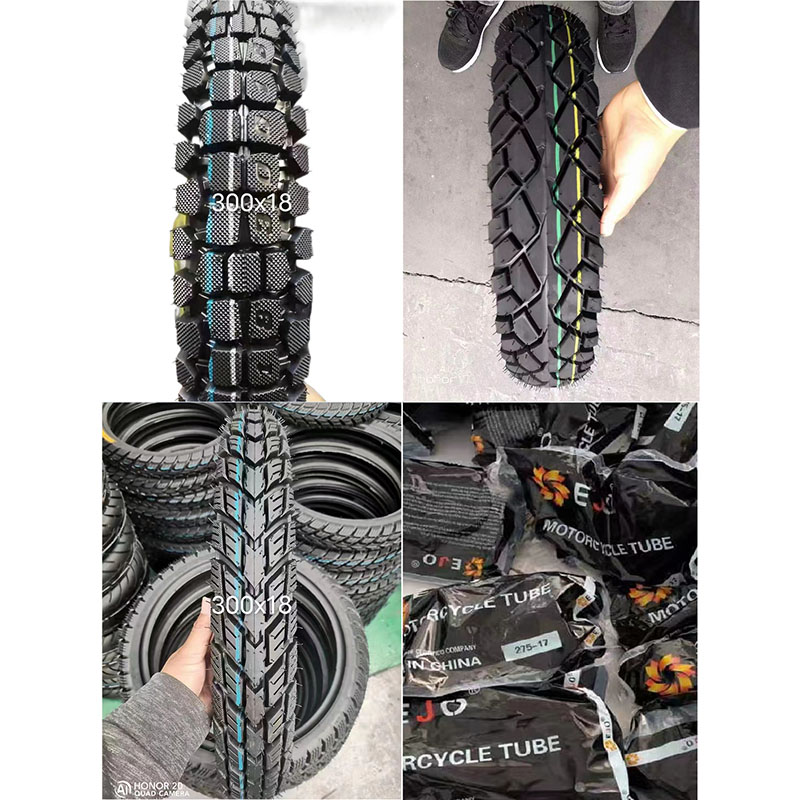

There are many types of Motorcycle Tyres, with different brands, different treads, and different specifications. Common tires are as follows

Hot-melt Motorcycle Tyres: As the name suggests, they have a low melting temperature. If they are driven slightly vigorously, they will be softened by heat and degummed, commonly known as "tire feces". After softening, the friction of the rubber will be greatly increased, and the grip will be significantly improved. The disadvantages are also obvious, short life, easy to consume, and easy to pierce sand and sharp objects after softening. "Smooth tires" are mostly used on racetracks.
Semi-hot-melt tires: Considering the track limitations of hot-melt tires, semi-hot-melt tires appeared. Semi-hot-melt Motorcycle Tyres combine the advantages of ordinary tires and hot-melt tires. After the tire temperature rises, it not only has strong grip, but also ensures sufficient hardness to prevent stones and debris on the road from piercing the tire. The degree of wear is also controlled within the allowable range. Most of the sports tires recommended by general manufacturers are semi-hot-melt tires, which are also sought after by many motorcycle friends in the market.
Radial tire: Radial is a vacuum tire. What is a vacuum tire? A vacuum tire is a low-pressure pneumatic tire without an inner tube. This tire uses the special structure of the rim of the wheel and the edge of the tire to seal the air in the tire body. A good vacuum tire is difficult to puncture. Even if it is punctured by a foreign object, the tire will not be deflated immediately, and it is also very convenient to repair after a puncture. A spicy strip can do it yourself. Vacuum tires have good elasticity and wear resistance, good adhesion and heat dissipation performance, especially all-steel radial vacuum tires. The radial Motorcycle Tyres have different measurement standards and different classifications, and multiple classifications can be interspersed with each other. The radial line indicates the performance of the tire structure. This structure is mainly used to distinguish bias tires, arched tires, pressure-regulated tires, etc. The international code for radial tires is "R", commonly known as "wire tires". Rain tires and sunny tires: Rain tires are tires for rainy days. This type of tire is developed for effective drainage on rainy days. On rainy days, a layer of water film will appear between the tire and the road surface. The appearance of this water film can make the tire's grip become zero. So rain tires appeared. The dense tread is actually a drainage groove. The design of the drainage groove is mainly based on the vehicle parameters to design the drainage volume per second. The general parameter of rain tires is how many L/S. Then the corresponding rain tire is the sunny tire. The tread of the sunny tire is less than that of the rain tire, commonly known as the dry tire. Both have different rubber formulas. The purchase of tires with different hardness should follow the specifications of the original factory to purchase and replace. They are all adjusted, not the wider the better. The performance and tread of the tire should also be selected according to your own use scenarios. For example, if you often drive on muddy roads, mountains, unpaved roads, or even snowy roads, you should choose off-road tires or tires with deep treads to facilitate the discharge of water and debris during work to achieve high grip.
Another way to determine the lifespan is to look at the wear mark of Motorcycle Tyres. The effective safety period of the tire is 3-5 years from the factory. If it exceeds this period, even if the tire has not been used, it needs to be replaced because it will age.